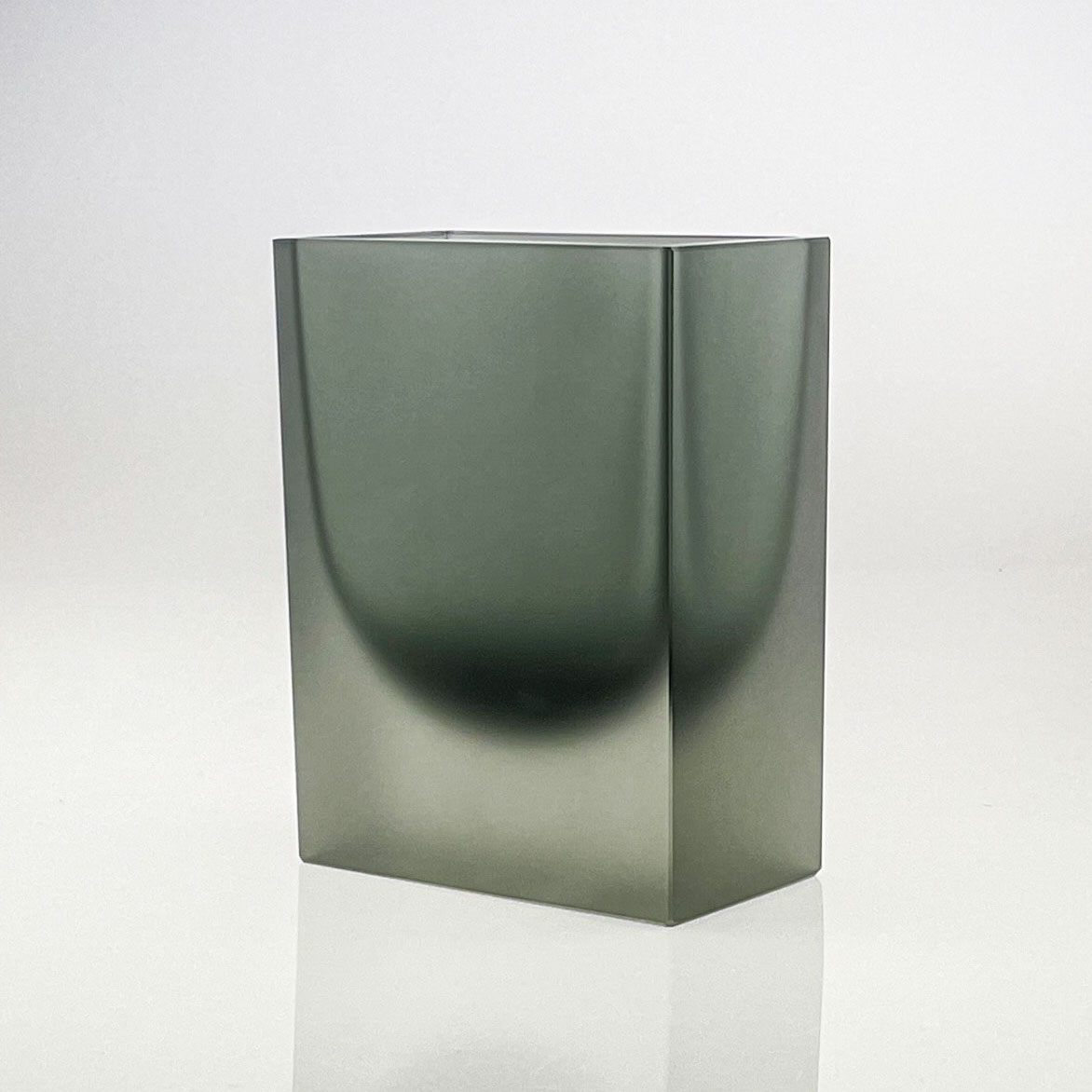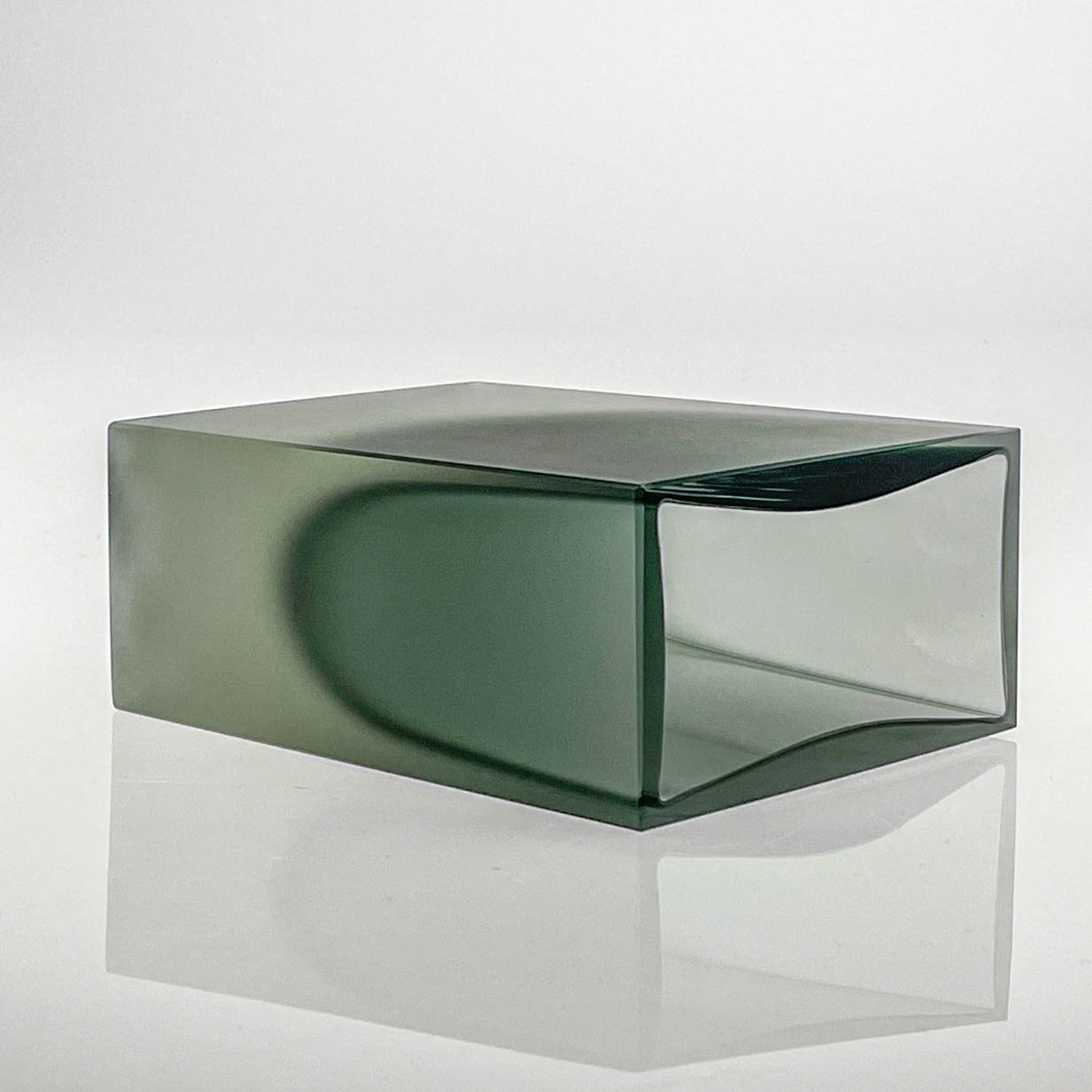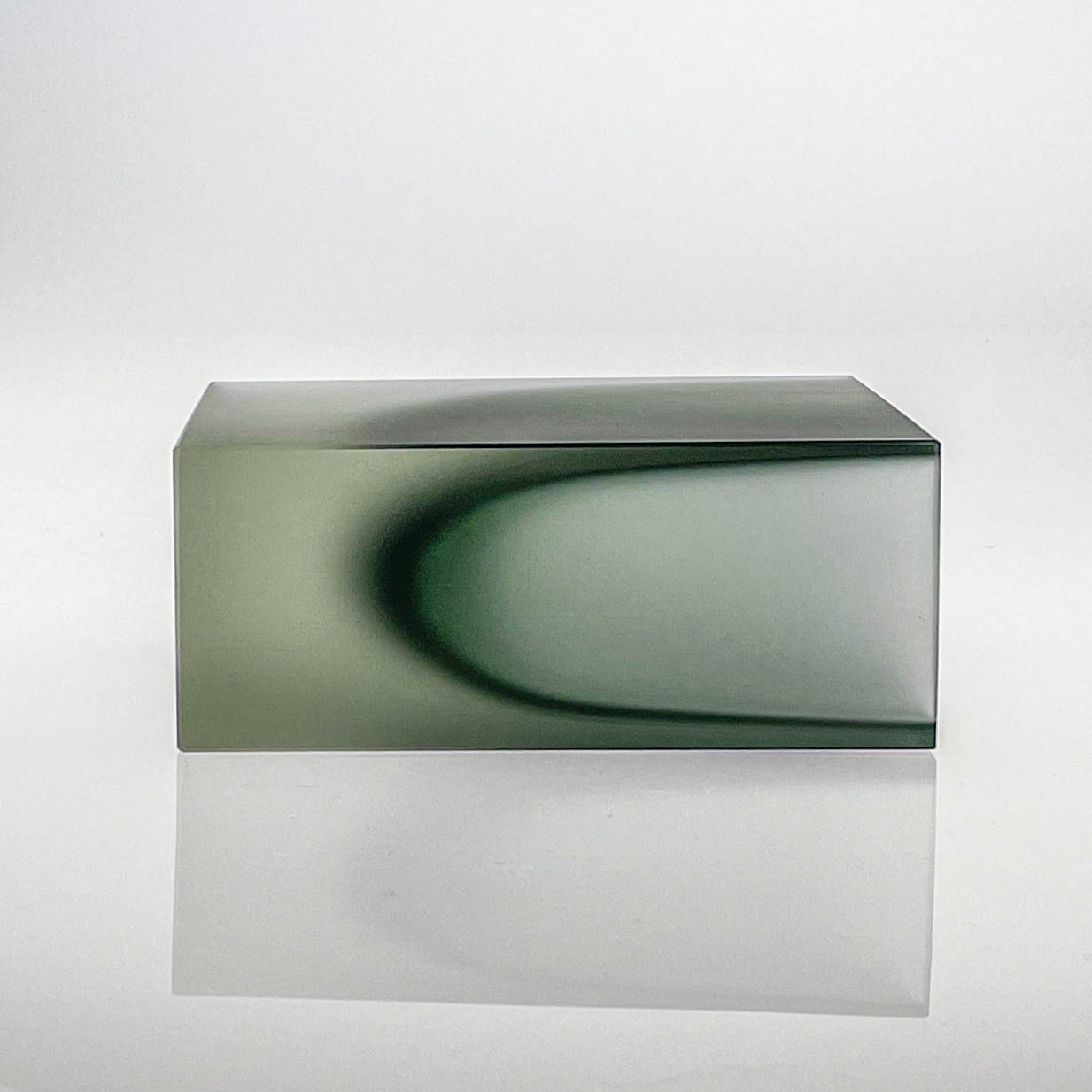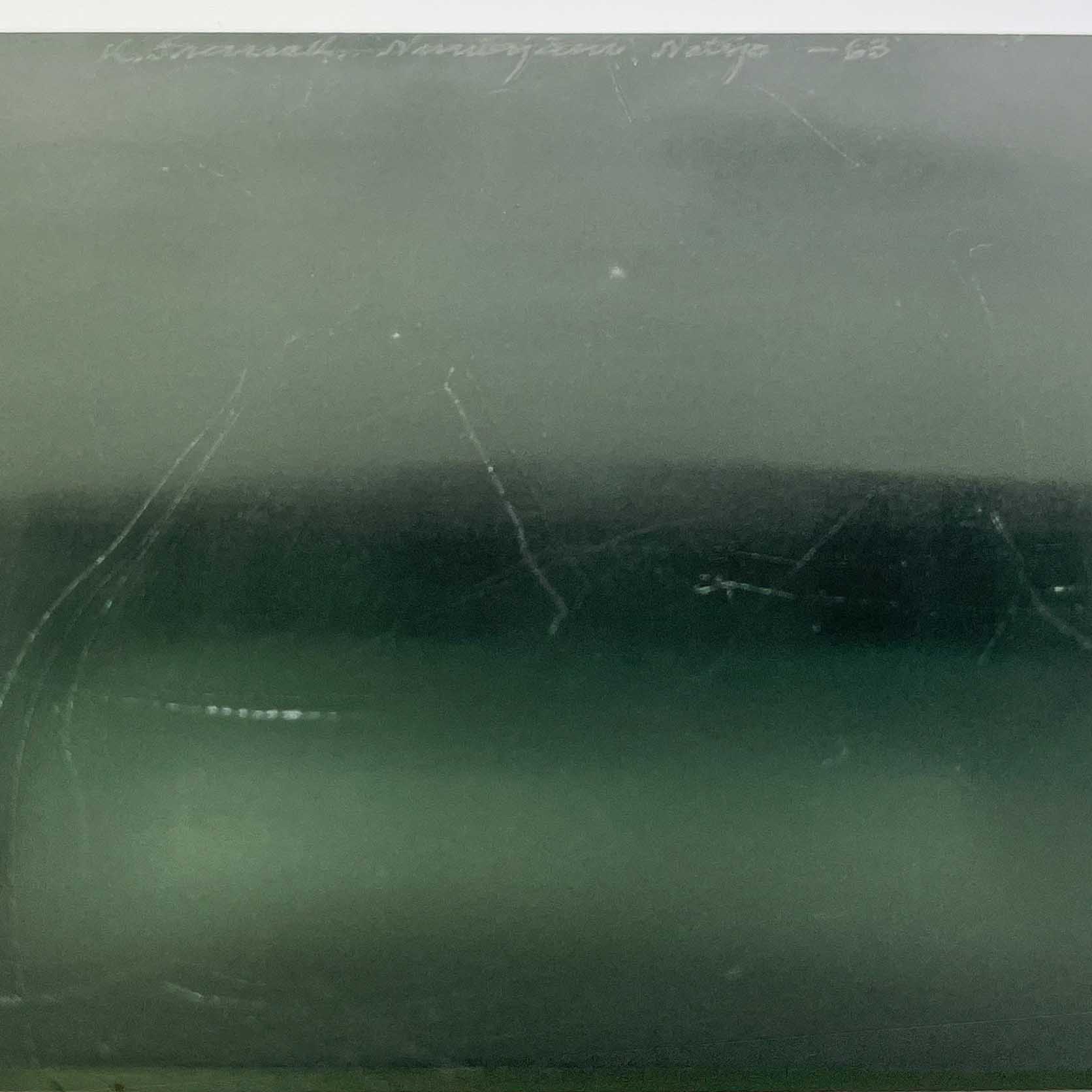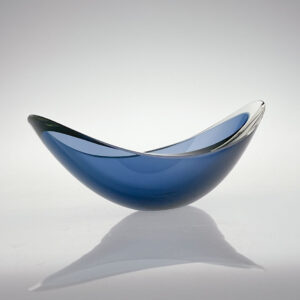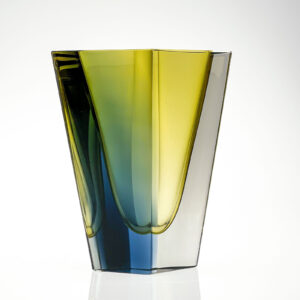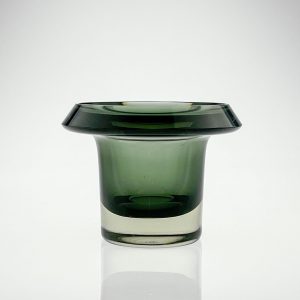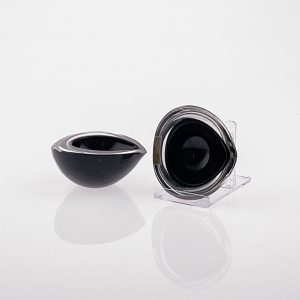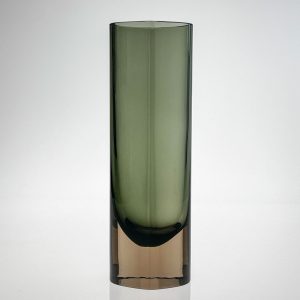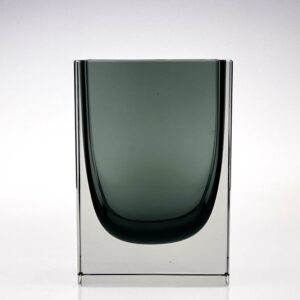| Marked | signed underneath the base in diamondpen: K. Franck Nuutajärvi-Notsjö ’63 (1963) |
|---|---|
| Condition | This art-object is in very good vintage condition, some minor scratches and wear consistent with age and use. No chips or cracks. |
| Literature | Marianne Aav (ed.), Kaj Franck, Universal Forms, p.325 |
| Dimensions | Height 16,9 cm |
Kaj Franck – A glass Art-Object, Model KF263 – Nuutajärvi-Notsjö, Finland 1963
SOLD
Out of stock
A fixed mould blown, cased, cut and etched art-object, model KF 263, in grey-green and clear glass. Designed by Kaj Franck in 1963 and executed by the Nuutajärvi-Notsjö glassworks, Finland in that same year.
These art-objects were made by the Finish Nuutajärvi-Notsjö glassworks between 1963 and 1966 in two sizes. This is the only art-object by Kaj Franck that has an etched surface.
It is fully marked underneath the base in diamond-pen: K. Frank – Nuutajärvi-Notsjö – ’63 (1963).
About Kaj Franck
Kaj Franck (Vyborg, Finland 1911 – Santorini, Greece 1989) was an influential Finnish designer and leading figure in Finnish art-world between 1940-1980. Today his name is used for the prestigious “The Kaj Franck Design Prize” annually awarded by the Finnish Design Forum.
Born in 1911 on the Finnish Russian border in a family of architects (his grandfather was director of the famous Arabia Ceramics factory) of Finnish-German-Swedish decent.
He attended the furniture department of Taideteollinen korkeakoulu (todays Aalto university school of Arts, Design and Architecture) in Helsinki.
After his studies he worked as a freelance designer until he joined Arabia as a designer in 1945. In 1950 he became Arabia’s Artistic Director. He also designed glass–objects for Iittala between 1946 and 1950 and between 1950 and 1976 for Nuutajärvi-Notsjö glassworks.
From 1945 onwards he worked as and educator at Taideteollinen korkeakoulu and he became the institute’s Artistic Director in 1960.
His modernist designs in everyday tableware glass are considered to be a revolution and classic Finnish design object (most notably his Kilta tableware and Kartio glassware).
He is often referred to as “the conscience of Finnish design”, moderation, ecology and equality were Franck’s principles. He strove to minimise the number of everyday objects we need in our lives, drawing attention to the sustainability and life cycle of products.
Kay Franck’s designs are in collections of numerous museums all over the world. Among others: Design Museum Helsinki, Museum of Modern Art, New York, Stedelijk Museum Amsterdam and The British Museum, London. He was a recipient of many prizes. Most notably the Lunning prize in 1955, a “Grand prix” and several “Gold medals” at the Triennale di Milano.



